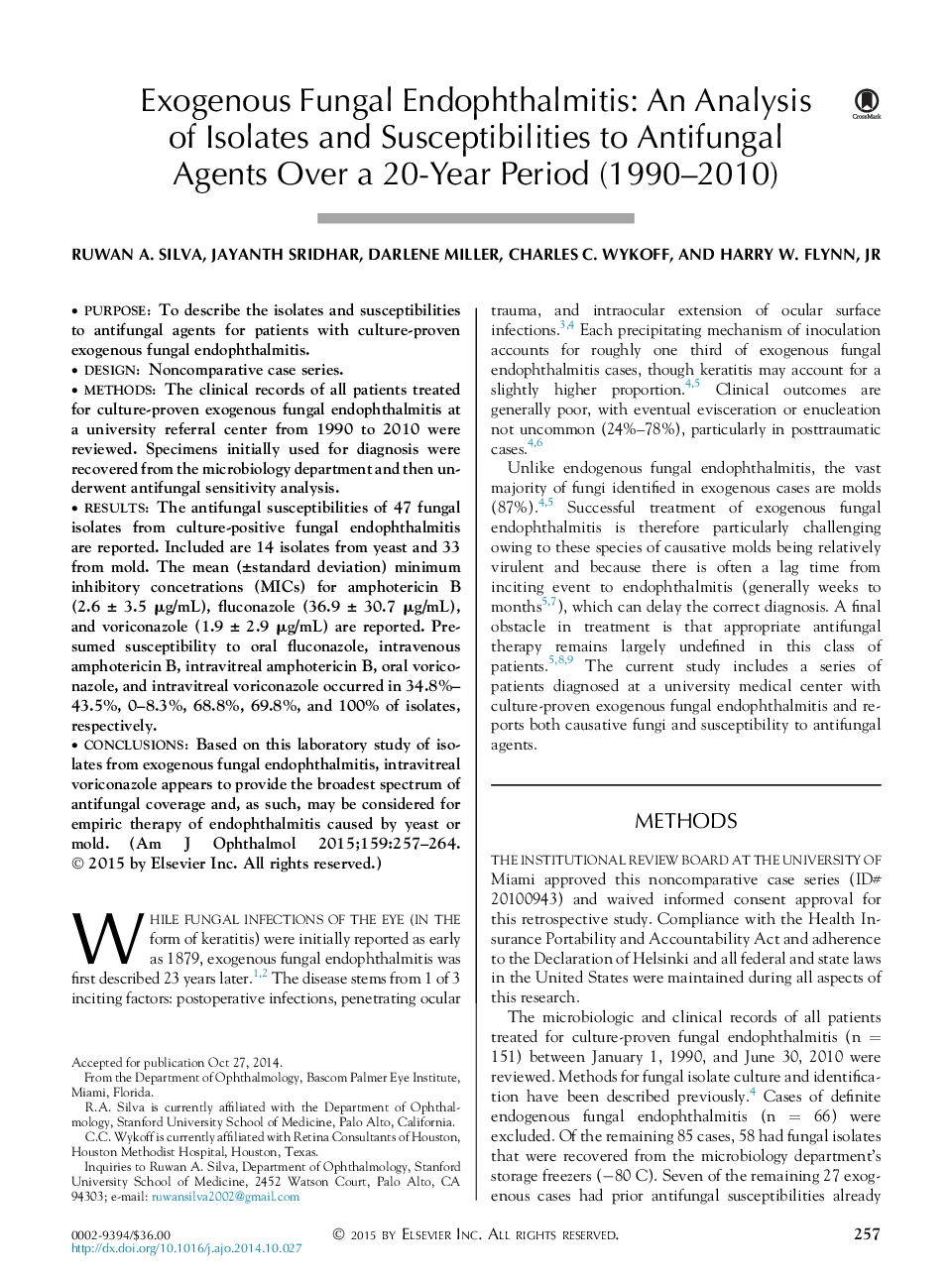| Article ID | Journal | Published Year | Pages | File Type |
|---|---|---|---|---|
| 6195638 | American Journal of Ophthalmology | 2015 | 9 Pages |
PurposeTo describe the isolates and susceptibilities to antifungal agents for patients with culture-proven exogenous fungal endophthalmitis.DesignNoncomparative case series.MethodsThe clinical records of all patients treated for culture-proven exogenous fungal endophthalmitis at a university referral center from 1990 to 2010 were reviewed. Specimens initially used for diagnosis were recovered from the microbiology department and then underwent antifungal sensitivity analysis.ResultsThe antifungal susceptibilities of 47 fungal isolates from culture-positive fungal endophthalmitis are reported. Included are 14 isolates from yeast and 33 from mold. The mean (±standard deviation) minimum inhibitory concetrations (MICs) for amphotericin B (2.6 ± 3.5 μg/mL), fluconazole (36.9 ± 30.7 μg/mL), and voriconazole (1.9 ± 2.9 μg/mL) are reported. Presumed susceptibility to oral fluconazole, intravenous amphotericin B, intravitreal amphotericin B, oral voriconazole, and intravitreal voriconazole occurred in 34.8%-43.5%, 0-8.3%, 68.8%, 69.8%, and 100% of isolates, respectively.ConclusionsBased on this laboratory study of isolates from exogenous fungal endophthalmitis, intravitreal voriconazole appears to provide the broadest spectrum of antifungal coverage and, as such, may be considered for empiric therapy of endophthalmitis caused by yeast or mold.
